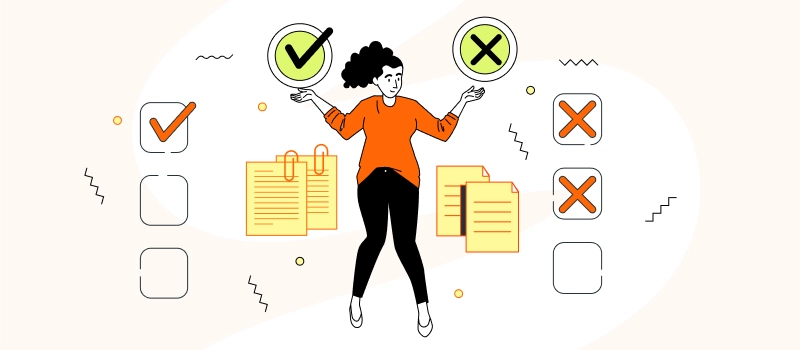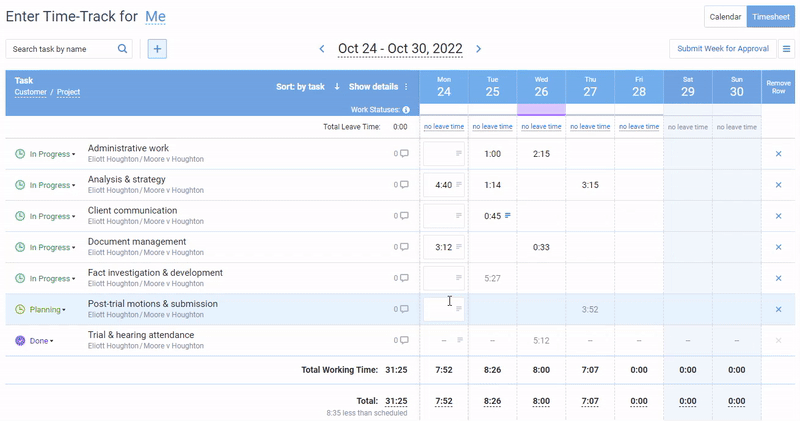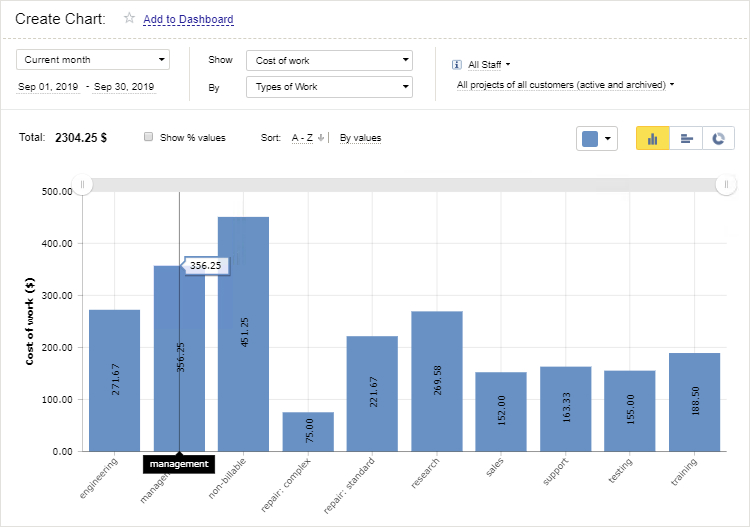
Are you feeling caught in the middle of decision-making? Well, you’re not alone.
Whether you’re a manager grappling with a critical business strategy or an employee facing a career crossroads, decision-making can be a daunting task. To help you handle it more efficiently, we invite you to dive deep into the world of pros and cons lists – a simple yet powerful tool that can help you weigh the options and make the best decisions.
Here, we’ll discuss what a pros and cons list is all about, why it’s worth using, and provide you with an easy-to-use template to get started.
So, grab your favorite beverage, sit back, and let’s discover how to become a decision-making ninja!
What’s a Pros and Cons List?
A pros and cons list is a decision-making tool used to weigh the advantages and disadvantages of a particular option or course of action. It’s a way to organize your thoughts and evaluate the potential outcomes of your choices.
To serve its purpose, the list should contain three basic elements:
- The idea / decision you intend to evaluate
- The pros column
- The cons column
On the “pros” side of the list, you would jot down all the positive aspects of the decision you’re considering. These might include things like increased revenue, improved relationships, personal fulfillment, and so on.
On the “cons” side, you would list all the potential drawbacks or negative consequences of the decision. This might include factors such as increased costs, damage to your reputation, decreased productivity, and so forth.
How Does a Pros and Cons List Help?
- Improved decision-making: By putting everything down on paper, you’ll be able to see more clearly which option has more benefits and which one has more drawbacks. This can help you make an informed decision that takes into account all of the relevant factors.
- More objective picture: When you’re faced with a tough decision, it can be easy to get bogged down by emotions or biases. Writing out a pros and cons list can help you stay more objective, as you are literally putting the pros and cons on paper.
- Creativity boost: While making a list, you are required to think outside the box and come up with new ideas. Writing out the pros and cons can help you see patterns and connections that you might not have thought of otherwise.
When to Use a Pros and Cons List
1. Making a major purchase
Whether you’re thinking of buying a house, a car, or project management software for your team, a pros and cons list can help you weigh up the benefits and potential drawbacks of each option.
For example, buying a brand new piece of equipment may seem appealing, but the high cost and rapid depreciation may be a downside. Alternatively, buying a used piece of production equipment may seem like a smart financial decision, but there may be hidden maintenance issues.
2. Deciding on a career path
One’s career impacts the trajectory of their life so it’s truly useful to evaluate the various job options and weigh their potential benefits and downsides before deciding what to become.
For instance, becoming a doctor may offer a high salary and job security, but it also requires years of expensive education and long hours of work. On the other hand, pursuing a career in the arts may offer creative fulfillment, but may not guarantee financial stability.
3. Choosing a business partner
When it comes to business partnerships, a lot is at stake, and choosing the wrong person could lead to long-term repercussions. So, creating a pros and cons list will help you put all the facts in one place, which will give you a clear idea of whether or not this partnership will work.
For example, partnering with someone with a complementary skill set may lead to a successful business venture, but personality differences could cause issues down the line.
4. Planning a trip
There are numerous factors to consider while planning a trip, such as budget, time, accommodation, and activities. Listing out the pros and cons of each location helps you to evaluate which destination is best for you based on your preferences and needs.
For example, location A may have lower accommodation costs, but location B may have better attractions to explore.
How to Make the Most Out of Pros and Cons List (+ Template)
- Be specific and factual. When writing out your pros and cons, provide as much detail as possible. Instead of simply writing “good salary” on the pros list, give a more detailed explanation such as “salary is higher than a current job, which will help pay off student loans faster.”
- Prioritize your points. Not all pros and cons are created equal. Some points may carry more weight than others, so it is important to prioritize them accordingly. For instance, if you are deciding whether to take a new job, prioritize salary, commute time, and potential for growth above the location of the office or the office amenities.
- Challenge your assumptions. While evaluating the pros and cons of any decision, take a step back and make sure that your assumptions are sound. Are you making a decision based on outdated information? Have you misinterpreted feedback from others? Be willing to challenge your own assumptions and do additional research before making a final decision.
- Consider the bigger picture. It’s easy to get caught up in small details, but it’s vital to consider the context of the decision and its potential large-scale impact. How does this decision affect your goals, values, aspirations, and the people around you? Take a step back and make sure that you are not missing anything important.
- Use our free pros and cons list template. It is quick and easy to use – simply state an idea or an option you want to evaluate, list out all its advantages and disadvantages, and then compare them side by side. By doing so, you can uncover some issues or benefits that you may have overlooked before and make informed decisions with more detailed and factual insights.
Step Up Decision-Making in Your Projects with actiTIME
Looking for a way to level up your decision-making game? actiTIME has got you covered! As a multifunctional project tracking software, it lets you keep ongoing work progress under control and provides and wealth of data for making smarter decisions.

With actiTIME, you can easily plan out projects, prioritize tasks, set deadlines, and allocate work to employees. And thanks to its time and cost tracking features, you’ll have a better understanding of how long it takes to complete a task, and how much money is being spent.

The best part? actiTIME provides detailed data on performance results, giving you the insight you need to make informed decisions. You’ll be better equipped to identify areas for improvement and adjust your approach accordingly.

Give actiTIME a try and take your project decision-making to the next level.












































